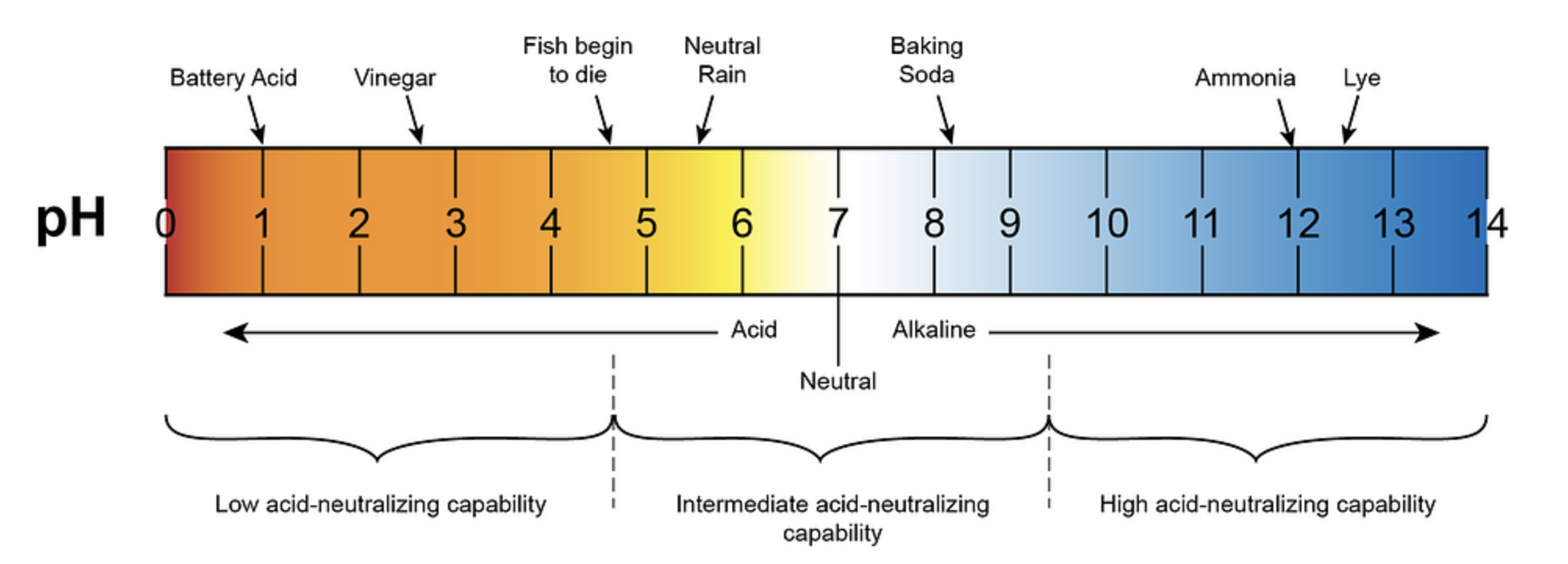The pH of a strong acid in water is typically around 0 to 1, with a lower pH indicating a higher concentration of hydrogen ions in the solution. Strong acids, such as hydrochloric acid, perchloric acid, and sulfuric acid, are completely or nearly 100% ionized in their solutions, meaning they dissociate completely in water to produce hydronium ions (H3O+) and their corresponding anions.
Calculating the pH of a Strong Acid Solution
To calculate the pH of a strong acid solution, you can use the formula pH = -log[H+], where [H+] is the concentration of hydrogen ions in the solution. For a strong acid, the concentration of hydrogen ions is equal to the concentration of the acid. For example, if you have a 0.050 M HCl solution, the pH would be calculated as follows:
pH = -log(0.050)
pH = 1.30
If the concentration of the acid is very dilute (less than 1 × 10−7 M), the pH is dominated by the autoionization of water. In this case, the pH is calculated using the formula pH = 14 + log[H+], where [H+] is the concentration of hydrogen ions from the autoionization of water.
Handling and Disposing of Strong Acids
When dealing with strong acids, it’s important to be aware of the potential hazards, such as burns and damage to materials. It’s also crucial to handle and dispose of strong acids properly, following local regulations and guidelines.
Potential Hazards of Strong Acids
- Burns: Strong acids can cause severe burns to the skin and eyes.
- Damage to materials: Strong acids can react with and damage various materials, such as metals, plastics, and fabrics.
- Toxic fumes: Some strong acids can produce toxic fumes when mixed with other substances.
Proper Handling and Disposal
- Wear appropriate personal protective equipment (PPE), such as gloves, goggles, and a lab coat.
- Work in a well-ventilated area or under a fume hood.
- Neutralize the acid before disposal, following local regulations.
- Dispose of the neutralized solution in a designated hazardous waste container.
Balancing the pH of a Strong Acid Solution
To balance the pH of a strong acid solution, you can add a base or a buffer. A base will react with the hydronium ions to form water and the corresponding salt, while a buffer will maintain the pH within a certain range by reacting with any added acids or bases.
Adding a Base
When adding a base to a strong acid solution, the reaction will produce a salt and water. For example, if you add sodium hydroxide (NaOH) to a hydrochloric acid (HCl) solution, the reaction will be:
HCl + NaOH → NaCl + H2O
The resulting solution will have a higher pH, as the concentration of hydronium ions has been reduced.
Using a Buffer
Buffers are solutions that can maintain a relatively constant pH when small amounts of an acid or base are added. They are often used to balance the pH of strong acid solutions. The choice of buffer depends on the desired pH range and the specific application.
Reactions of Strong Acids with Other Substances
Strong acids can react with various substances, such as metals, carbonates, and bicarbonates, to produce different products.
Reaction with Metals
Strong acids can react with metals to produce hydrogen gas and a metal salt. For example, the reaction between hydrochloric acid (HCl) and iron (Fe) would be:
2HCl + Fe → FeCl2 + H2
Reaction with Carbonates and Bicarbonates
Strong acids can react with carbonates and bicarbonates to produce carbon dioxide and water. For example, the reaction between sulfuric acid (H2SO4) and sodium bicarbonate (NaHCO3) would be:
H2SO4 + 2NaHCO3 → Na2SO4 + 2H2O + 2CO2
It’s important to be aware of these reactions and take appropriate precautions when handling strong acids.
References:
– Strong and Weak Acids – Chemistry LibreTexts. Retrieved from https://chem.libretexts.org/Courses/Brevard_College/CHE_104%3A_Principles_of_Chemistry_II/07%3A_Acid_and_Base_Equilibria/7.14%3A_Calculating_pH_of_Strong_Acid_and_Base_Solutions
– Chemistry LibreTexts. Retrieved from https://chem.libretexts.org/Bookshelves/Physical_and_Theoretical_Chemistry_Textbook_Maps/Supplemental_Modules_%28Physical_and_Theoretical_Chemistry%29/Equilibria/Acid-Base_Equilibria/2._Strong_and_Weak_Acids
– Finding pH – University of Rhode Island. Retrieved from https://www.chm.uri.edu/weuler/chm112/lectures/lecture13.html
– How to Calculate the pH of a Strong Acid Solution | Chemistry – Study.com. Retrieved from https://study.com/skill/learn/how-to-calculate-the-ph-of-a-strong-acid-solution-explanation.html
– 16.4 pH Calculations for Strong Acids and Bases | General Chemistry – YouTube. Retrieved from https://www.youtube.com/watch?v=WUkiaeZe_3o

